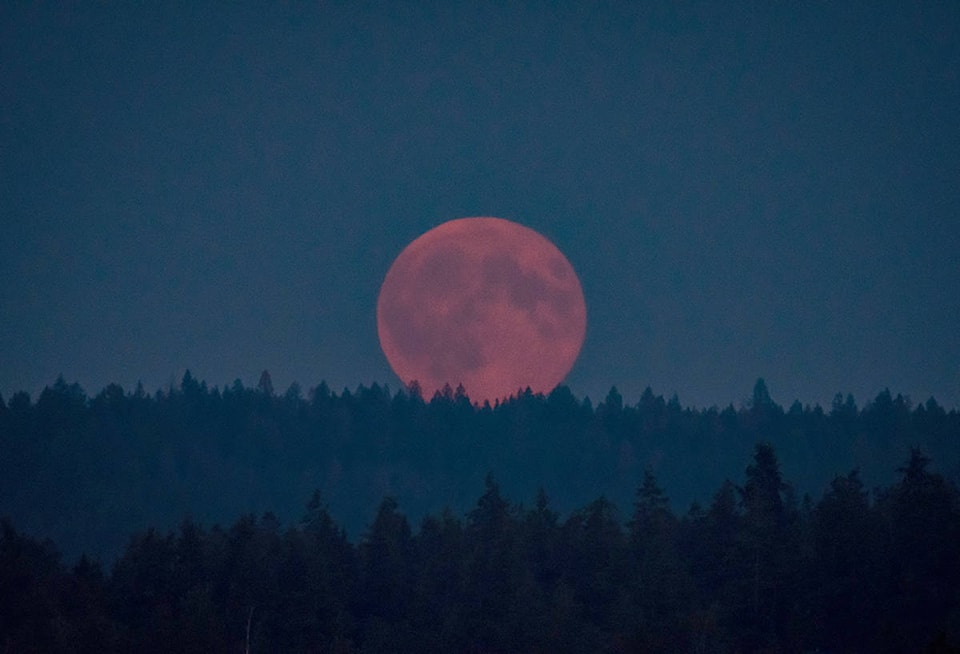B.C. residents will only get one opportunity to witness an eclipse in 2019, so mark your calendars for Jan. 20 to catch a lunar eclipse and “super blood wolf moon”.
Astronomer Ken Tapping, who works out of the Dominion Radio Astrophysical Observatory (DRAO), broke down when exactly our eyes should be on the sky that evening.
“At 6:36 p.m., we’ll see the moon start to darken as it moves into the outer shadow of the Earth. Then at 7:34 p.m., it will start to move into the inner shadow, so at that point we’ll start to see the shadow of the edge of the Earth moving across the lunar disc slowly,” said Tapping. “At 8:41 p.m., the moon will be completely covered - completely immersed in the Earth’s shadow. The middle of the eclipse is at 9:12 p.m. and at 9:43 we will see the moon start to move out of the shadow.”
Tapping continued that at 10:50 p.m., the moon will be completely out of the Earth’s inner shadow, with the eclipse officially ending at 11:48 p.m. when the moon exits the outer shadow. He said residents shouldn’t be surprised that the eclipse will last for nearly five hours.
“The Earth casts a fairly large shadow, as opposed to when we’re looking at the shadow of the moon on the Earth for eclipses of the Sun - that casts a very small shadow,” said Tapping.
Also unlike a solar eclipse, residents do not need to avert their gaze from the moon during the eclipse or use visionary aids to watch the eclipse take place. Tapping said a “super blood wolf moon”, which is when the moon appears red, can take place during this eclipse depending on how clean the atmosphere is.
“If you were standing on the moon in the middle of the eclipse looking at the Earth, you wouldn’t see the Sun because the Earth would be blocking it. What you would see is a ring of red around the Earth, which is essentially the sunset colour of the Sun shining through the atmosphere, then being refracted onto the moon,” said Tapping. “So the light that will be shining on the moon is red because of the Earth’s atmosphere, so if the atmosphere is nice and clean then you get a lovely bronze or blood-coloured moon. If there’s a lot of pollution, the moon will look darker and more grey.”
Tapping said this is the only eclipse in 2019 we will have the pleasure of seeing from B.C. and North America in general.
“There will be a solar eclipse on Jan. 6, which will only be visible in Asia. There’s a total solar eclipse on July 2, visible only from the South Pacific and South America,” said Tapping. “July 4 will have a lunar eclipse only visible from South America, and on Dec. 26 there will be a solar eclipse over the Indian and Pacific Oceans which will cross over hardly any land at all.”
To report a typo, email: editor@pentictonwesternnews.com.
<>Jordyn Thomson | Reporter
Send Jordyn Thomson an email.
Like the on
Follow us on



